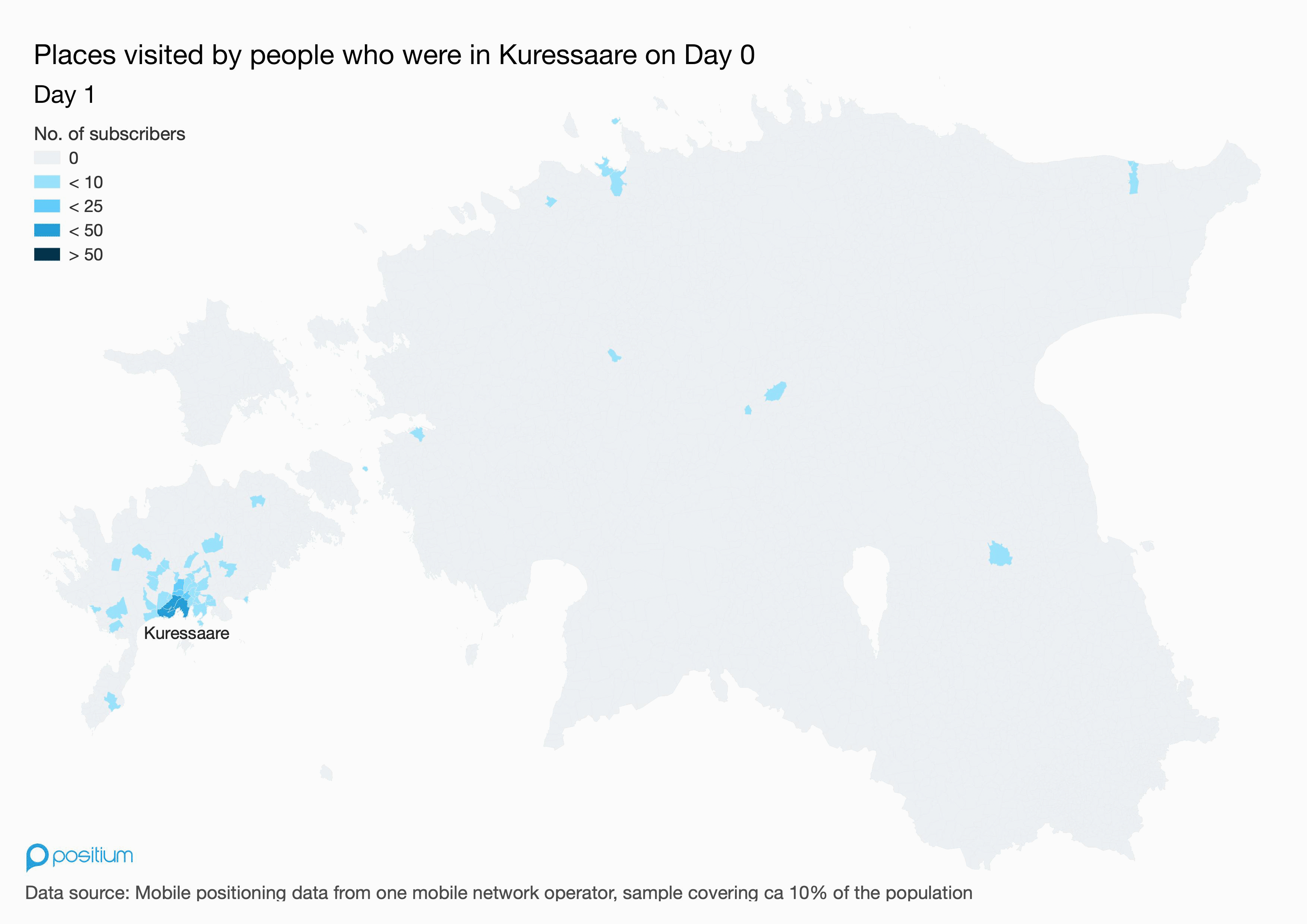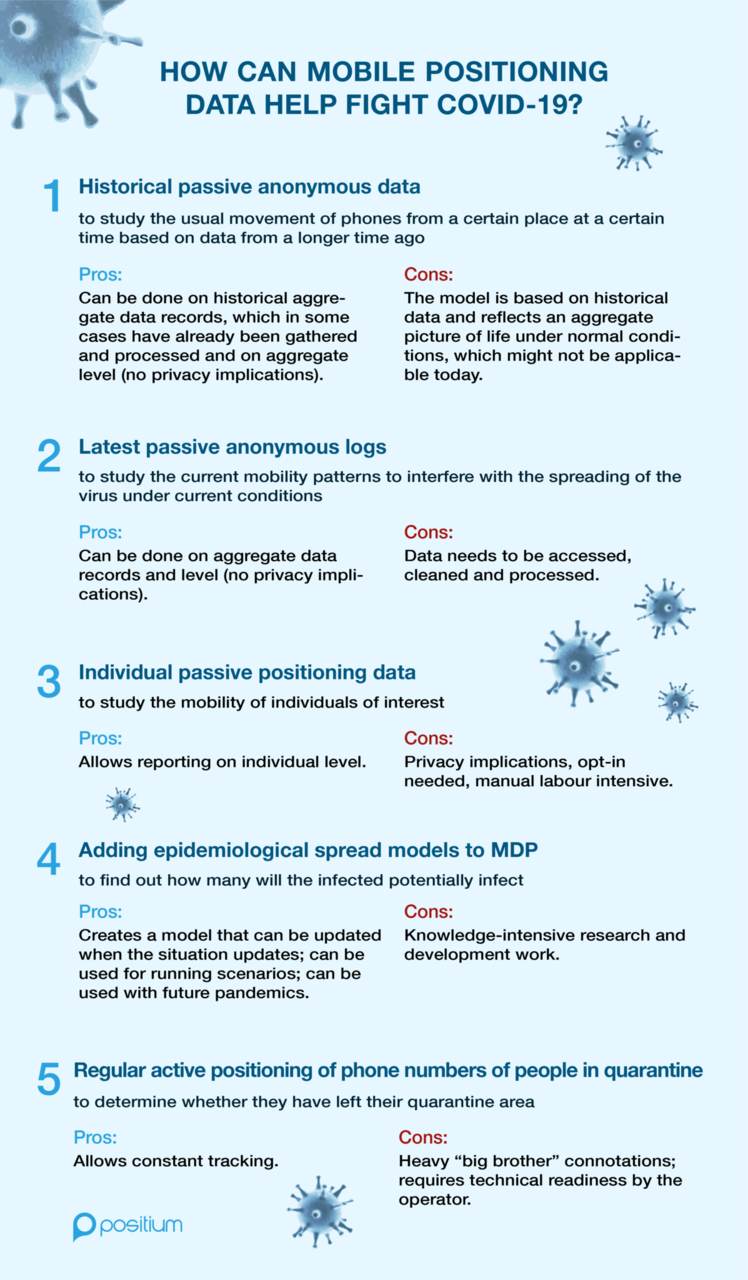Having mobility data for understanding the disease spread trajectories is crucial for effective action and measuring impact. Epidemiologists are using global travel data to understand the global spread of the disease. Countries are turning to mobile network operators to notify the public of proper action, and to track the travel patterns of individuals.
Previously, mobile positioning data has also been used in connection with the Zika virus in Brazil, Ebola virus in West Africa and tuberculosis in India, among others.
Mobile positioning data can be divided into the following categories based on the source of data:
- Historical location logs (passive positioning)
-
Personalised data, logs are connected to phone numbers (and/or personal identification codes)
- Anonymous data
-
Personalised data, logs are connected to phone numbers (and/or personal identification codes)
- Personalised real-time positioning (active positioning, determining location through the MPS system of mobile network operators)
Ranking the positioning and analytical methods from “light” to “heavy”:
Studying the usual mobility patterns to infer the spread of the virus under normal conditions. Historical passive anonymous data can be used to study the usual movement of phones from a certain place (settlement unit, or service area of a cell tower) at a certain time (hour, day), in time based on from a longer time ago (i.e. 2018). For example, the spread of phones that were in a certain city, in a certain district on day X, displayed over the next 31 days. Such modelling can help answer the question: “If those infected are found in a district, then where would they have gone in the following days according to their regular mobility pattern?” This example is illustrated by the accompanying image.
Studying the current mobility patterns to infer spreading of the virus under current conditions. Using the previous logic on the latest passive anonymous logs. Short of looking into the future, we can see where people who were at, for example, the volleyball tournament in Kuressaare (in the same cell tower area as the tournament itself) went in the following days (settlement unit, location of cell tower). The same illustration as in the previous point can be used to describe this situation.
Studying the mobility of individuals of interest. Using the previous logic applied to individual passive positioning data, meaning that we identify the phone numbers of the people who were at X location at X time, and where they have been to since. Can be used to contact the potentially infected. A similar approach might already be used to contact those numbers, which were located abroad. Technically, using this method it would be possible to determine where those numbers, who were previously in Northern Italy, have been in the country.
By adding epidemiological spread models of an infection (how many will the infected potentially infect), it is possible, based on previous points, to create an infection model for a disease (theoretically). The process would be something like this: determine the potential infection carriers; based on their whereabouts, identify people in the same place at the same time; apply a formula to find how many of those the first carriers could have infected; create a model; then continue these steps throughout the infection transfer stages. It is important to note that this method has yet to be developed and validated, but several approaches have been tried with other data sets for COVID-19 and with MPD for other diseases.
Applying regular (i.e. every 15 minutes) active positioning on phone numbers of people in quarantine to determine whether they have left their quarantine area. Using passive positioning, determine those who have been in the same area with the infected.
All the aforementioned points require close collaboration with and readiness from the mobile network operators. Furthermore, this needs to be supported by a legal guarantee that such methods can be used, and that operators are legally allowed to process and issue data and use their systems for this purpose. There is a risk of bad public perception, therefore it has to be confirmed beforehand whether the chosen method is useful, gives the desired results and will help save lives and alleviate the crisis.
Would you be interested in learning more about mobile big data and Positium? Let's talk about what mobile big data can do to help your organisation make decisions based on population mobility.
.png)
_large.png)

